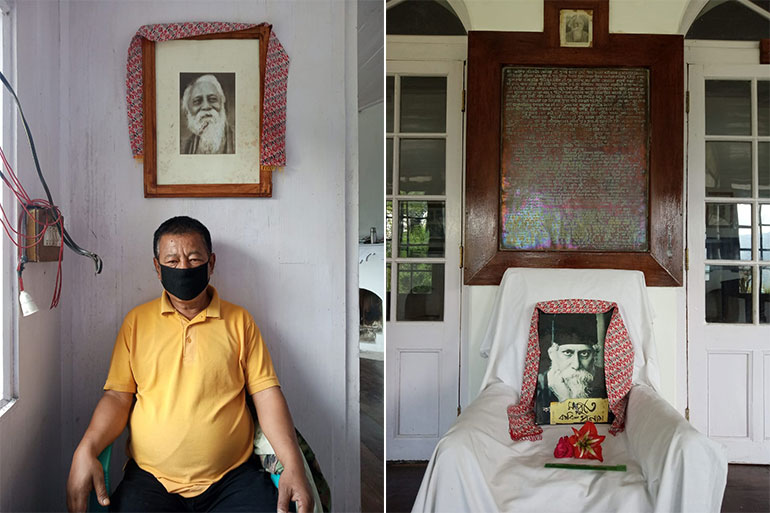Beyond literature, Rabindranath Tagore explored medical curiosities in Mungpoo - GetBengal story

Rabindranath Tagore’s connection with Mungpoo goes far beyond literature. it is a place where his creativity, compassion, and scientific curiosity came together. Even today, his legacy lives on through people like Shishir Routh, who has dedicated his life to preserving the poet’s memories.
Shishir Routh of Mungpoo has kept alive his deep devotion to Rabindranath Tagore. He pays homage to the poet at the Rabindra Bhavan in Mungpoo, a house that still carries Tagore’s memories. For Shishir, the poet remains a constant presence in his heart throughout the year.

Shishir Routh looks after the historic Rabindra Bhavan in Mungpoo. If he sees dust on the chairs or tables once used by the poet, he cleans it with his own hands. When tourists come, he shows them around the house where Rabindranath Tagore once lived. Sometimes, he even sings Tagore songs in his clear voice. Visitors from India and abroad are touched by his love for the poet. Some of them, pleased with his warm behavior, even give him a little money as a token of respect.
Mr. Routh says that he has been closely connected with this house since the year 2000. To the poet, there was no difference of caste or religion; he saw everyone simply as human beings. Mr. Routh tries to bring that same spirit into his own life as well.
Rabindranath Tagore visited Mungpoo several times. His first visit was on 21st May 1937. Later, in 1939 and 1940, he spent more time there. In Mungpoo, he not only wrote but also practiced medicine. Even today, a few bottles of biochemic medicines used by him are preserved in the house. Apart from malaria, he distributed biochemic medicines among local people for many other ailments.
Tagore had a deep interest in medical science, especially in homeopathy and biochemic treatment. Once, before an influenza epidemic reached Visva-Bharati, he prepared a herbal medicine called Panchatikta Pachon—made from Teuri, Neem, Gulanch, Nishinda, and Thankuni. He gave it to the residents, and as a result, influenza could not spread there. To strengthen immunity, he always emphasized eating rice, pulses, vegetables, and fruits. He also believed that both overeating and undereating were harmful to health. Tagore regularly enriched his knowledge by reading various medical journals.

Shishir Routh’s late father, Debiram Routh, once looked after the library of Rabindra Bhavan. Shishir says, “Today, we have become too proud. We no longer believe in the Supreme Power. Yet, the poet himself used to come courageously to this Rabindra Bhavan, right in front of the Mungpoo Cinchona Plantation. At that time, malaria was a common occurrence in this hill region. I have heard that the poet came here bravely and, along with his literary work, distributed medicines for malaria and fever among the hill people. But how much of his scientific outlook have we truly embraced today? Here in Mungpoo, Tagore would unite himself with nature. And it was here in Mungpoo that quinine, the medicine for malaria, was made from the bark of cinchona trees. These hills are full of medicinal plants. If we research them properly, perhaps we may discover new cures for many diseases.”
Therefore, Tagore’s innovative medical knowledge has always been a source of guidance and inspiration, reminding us to value nature, embrace humility, and seek holistic well-being for a better future.
Note:
Translated by Sabana Yasmin
To read the original Bengali article click here:











